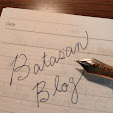RPA on Cloud Computer #2
I started using Cloud Computer, a local but NTT-affiliated service in Japan, with 2 CPUs and 2 gigabytes of memory for a reasonable (I think) maximum of 700 yen/month. The Dynabook N40 at home has taken on a second life (lol) as a Thin Client.
There is one thing I would like to confirm before using RPA with Cloud Computer this time. What is the resolution of the screen when not connected to Cloud Computer via VNC? ** I don't know what you are talking about. I know you don't know what I'm talking about, but I don't know much either (lol)... When I was still an active engineer about 20 years ago, most of my work and geeky activities were done on the command line. Of course, I used X-Window and Windows, but I used them only as it is, with no customization. So I am not good at this area at all. By the way, command line is what is called CUI or shell, and it is the world of computers without using a mouse. For some person, it is more understandable, let's say , it is just like MS-DOS.
RPA is a part of the mouse-using culture. In a world without a mouse, there are only commands, so there is no need to bring in the concept of RPA, and all you have to do is to write a list of commands and execute them in order from the top (with some logic, of course). Before the advent of RPA, I remember that even when surfing the Internet, I had to acquire information from scripts and programs via http and then analyze the tags. However, with the development of CSS and other technologies in addition to images and videos, information processing by tag analysis is complicated and difficult, so it has become simpler and quicker to automate the world as it is, which is what RPA is. I think this is what RPA is all about.
In RPA, of course, if the resolution changes, the images of buttons and input fields may not match the images prepared in advance, so it is necessary to know the resolution. Therefore, it is necessary to know the resolution of the screen. However, while RPA is being executed on a cloud Computer, it is left unconnected from the home PC, so the screen is not physically output anywhere during that time. However, the RPA is working by properly understanding the location and contents of the Window of the application, which is not visible to humans. What is the screen resolution at that time? is my question.
At the result , I understand that, when the RPA is running on a Cloud Computer, the monitor is connected even if the screen is not physically output anywhere. When I ran it with no VNC connection and only an ssh connection, I got the following message
$ xrandr Screen 0: minimum 32 x 32, current 1920 x 1200, maximum 32768 x 32768 VNC-0 connected primary 1920x1200+0+0 0mm x 0mm
$ xrandr
Screen 0: minimum 32 x 32, current 1920 x 1200, maximum 32768 x 32768
VNC-0 connected primary 1920x1200+0+0 0mm x 0mmOn the Cloud Computer side, the VNC application (vncserver) is launched, so it is the monitor. In other words, when the vncserver was started, the monitor was already connected from the OS point of view, and whether or not the VNC app was viewing it from the home computer was not important to either the OS or the RPA. So if you want to run RPA from your home PC on a Cloud Computer, you don't necessarily need to connect via VNC, just an ssh connection.
$ xrandr --output VNC-0 mode=1920x1080 java sikulix ...
$ xrandr --output VNC-0 mode=1920x1080
java sikulix ...I found no problem if I specify the resolution first and then run the program. To be honest, it was getting a little hard to start up an application for mouse (so-called desktop) on my Dynabook N40, which is my home thin client, but now that I know I can run RPA from just the command line, I'll let it work a little longer (lol).


0 Comments:
Post a Comment
Subscribe to Post Comments [Atom]
<< Home